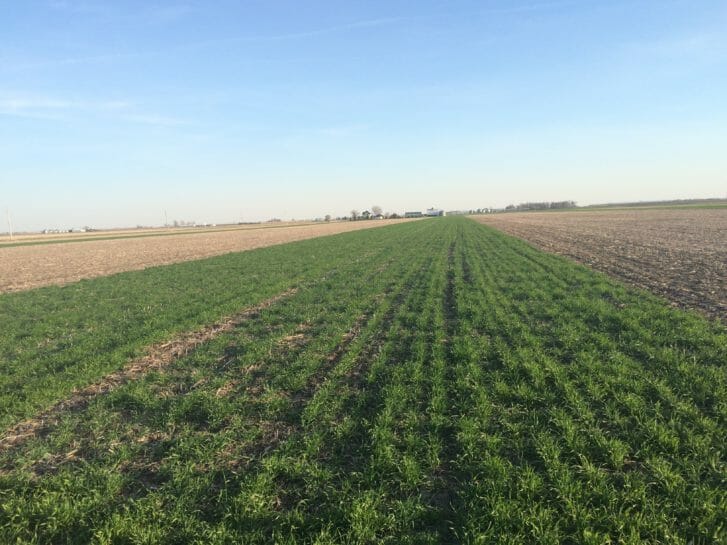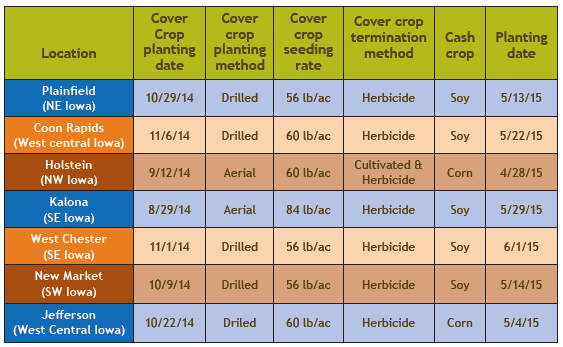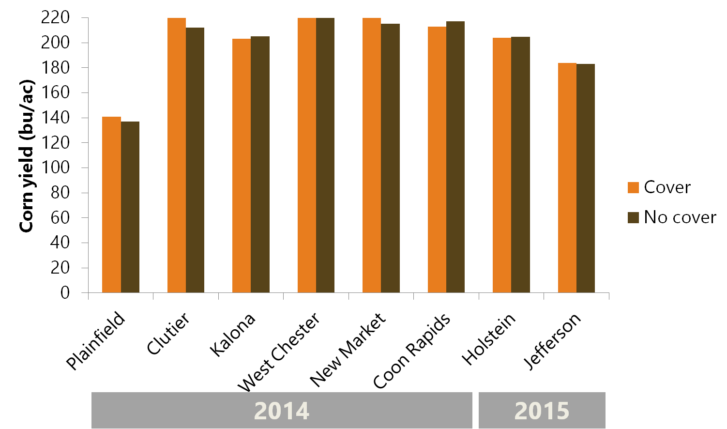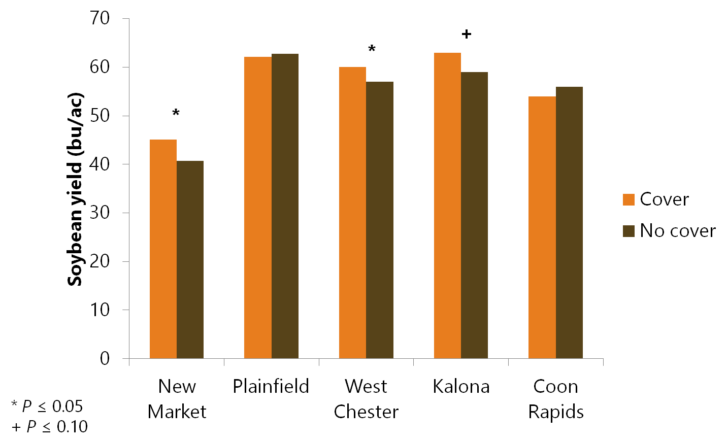Winter Rye Cover Crop Effect on Cash Crop Yield, Year 7 update
An update to our “flagship” cover crop research trial is now available: “Winter Cereal Rye Cover Crop Effect on Cash Crop Yield: Year 7.” This is a long-term project being conducted by Iowa Learning Farms and Practical Farmers of Iowa. Between 2009 and 2015, 12 cooperators have contributed to 53 site-years of on-farm research as part of this project.
In summary, farmers reported that in 49 of 53 site-years, properly managed cover crops had little to no negative effect on corn and soybean yield (and actually increased soybean yield in 7 site-years).

A cover crop strip at Rob Stout’s farm with “no-cover” strips on either side.
How the study was conducted
This long-term study employs a “paired strips” design; Cooperators establish and maintain replicated strips the length of their field for the duration of the study in corn-soybean rotations. Each replication has one strip with cover crops and one without cover crops. The table below shows how the seven cooperators managed cover crops and cash crops during the 2015 growing season.

Recent corn and soybean yield results
At all but one location the past two years, corn yields were near or above 200 bu/ac regardless of the cover crop.

Corn yields in 2014 and 2015 as affected by the cover crop.
In 2015, the cover crop increased soybean yield at three locations.

Soybean yields in 2015 as affected by the cover crop.
Study trends
Over the course of this project, 30 site-years have been dedicated to determining the effect of the cover crop on corn yields and 23 site-years have been dedicated to determining the effect of the cover crop on soybean yields. In the majority of cases, corn yield was not affected by the cover crop. Read the full report here.
An earlier post to this blog described soil health findings from this long-term research project. While there tended to be differences among the locations, there were generally no differences in soil health variables between the cover and no-cover treatments at the locations. You can read more about that here: Does a cereal rye cover crop affect soil health?
For more information on this study, contact Stefan Gailans at stefan@practicalfarmers.org.
The project was made possible by funds provided by the State Soil Conservation Committee, the Iowa Department of Agriculture and Land Stewardship, NCR-SARE, the Walton Family Foundation and the Iowa Learning Farms.
